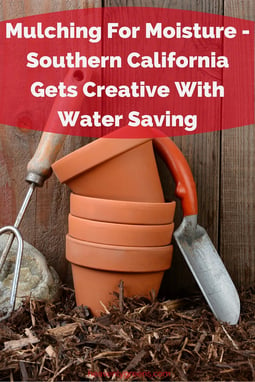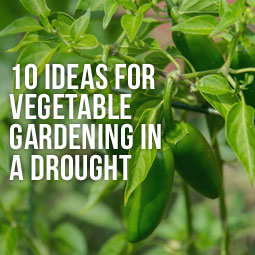 With drought conditions in Southern California continually increasing in severity, homeowners are looking for creative ways to save water and keep their lawns looking their very best. Applying mulch two or three times a year helps soil preserve vital nutrients and also helps to keep the ground moist. Both animal and plant life depend on top soil for their survival. If the soil has an abundance of nutrients, plants and animals will thrive.
With drought conditions in Southern California continually increasing in severity, homeowners are looking for creative ways to save water and keep their lawns looking their very best. Applying mulch two or three times a year helps soil preserve vital nutrients and also helps to keep the ground moist. Both animal and plant life depend on top soil for their survival. If the soil has an abundance of nutrients, plants and animals will thrive.
Mulch is a combination of dead branches, leaves, twigs, grass clippings and other plant based debris found on the ground. Organisms like fungi and bacteria feed on these materials and cause them to decay. As the organic, raw materials begin to break down, they are reabsorbed into the soil, providing vital nutrients for both plants and animals. Mulch acts as a natural form of compost by helping to provide moisture as well as supporting microbial life found in the soil. As mulch decays, substances are produced that allow the soil to hold more moisture and air. This supports proper root growth and keeps the ground from becoming hard and unyielding.
Different Types of Mulch
There are two kinds of mulch. Inorganic mulch consists of small stones, gravel, rubber sheeting and plastic materials that are often found in and above ground. These materials prevent the ground from becoming hard and compact. This type of mulch creates space that allows for moisture and nutrients to work their way through the soil. It does not break down or degrade over time.
Organic mulch can be almost anything that is natural. Compost, wood chips, sawdust and small bits of bark or twigs are considered to be organic or natural. Organic forms of mulch will gradually decay and be naturally broken down by bacteria, fungus and other microbes to be used for food by earthworms and other small creatures that live in the soil.
Mulching Saves Moisture
Because mulch enters into the soil and creates a minute network of pathways, it allows moisture to be easily absorbed, taken deep into the ground. The farther down the moisture is drawn, the easier it is for the roots of plants to utilize it before it evaporates back into the air. Mulch prevents top soil from being tightly compacted. When soil becomes hard packed, it is harder for water to be absorbed. This causes water to remain close to the surface where it can be evaporated by strong winds and direct sunlight.
Mulch also acts as a barrier to keep moisture in the soil. Once water has worked its way through the mulch and into the top soil, it is protected from both wind and sunlight allowing it to have a chance to be fully absorbed. During a heavy rain, mulch also protects the soil from erosion. By protecting the surface of the soil, mulch prevents mud puddles from being created that can eventually result in soil and plant loss.
Other Benefits of Mulching
Using mulches in your landscaping offers other benefits as well. Because mulch is applied in thick layers, it prevents sunlight from reaching down to the soil. If sun cannot reach the soil, weeds and other unwanted plants cannot germinate. This eliminates the need for toxic herbicides that can damage other plants.
Another benefit of mulching is its composting effect. As the organic material breaks down, it creates a valuable food source for microbes, earthworms and plant life that each needs to survive. For plants, it acts as an effective fertilizer that offers vital nutrients as well as helps to conceal moisture and protect them from overcrowding by other, less savory plants.











